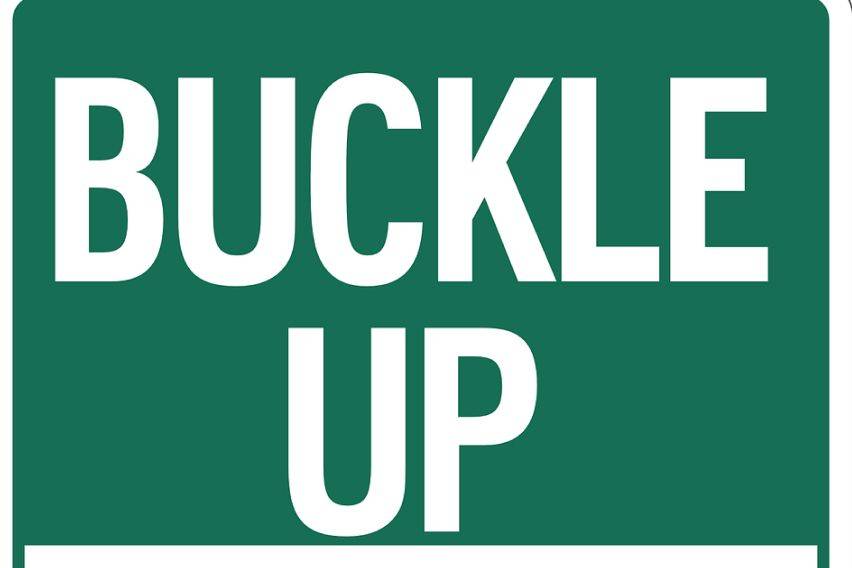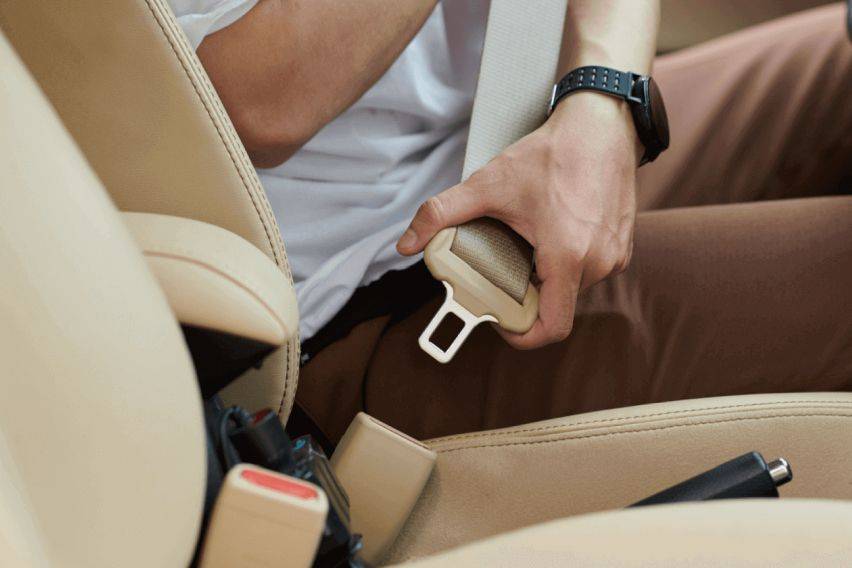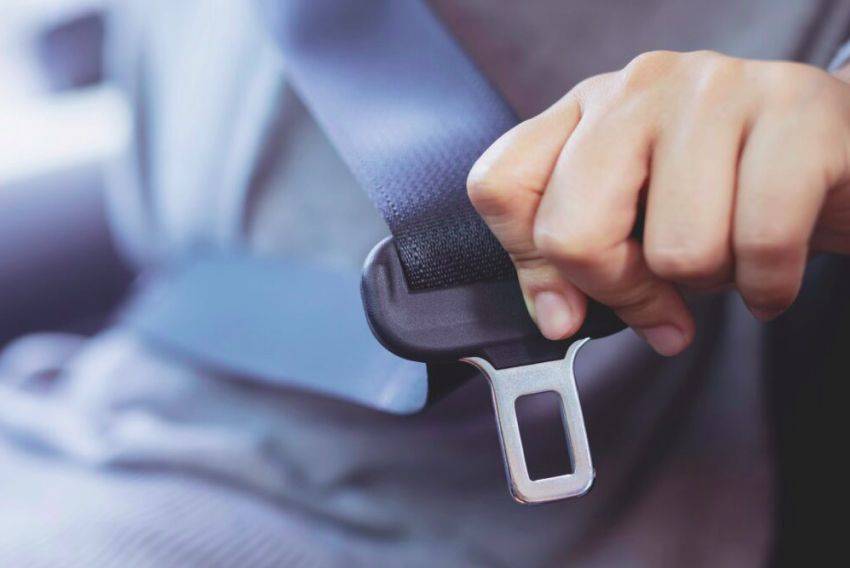All you need to know about seatbelts: Rules, penalties, & more

- KEY TAKEAWAYS
- Road safety measures by the Philippine government
- Seatbelt: Importance, features, & more
- Importance
- Features
- RA 8750: Seat Belts Use Act
- RA 8750: Key provisions
- RA 8750: Exemptions
- RA 8750: Fine & Penalties
- Common myths around seatbelts
- How to properly wear a seatbelt?
- Additional road safety tips
Road accidents are among the leading causes of injuries and fatalities in the Philippines. Therefore, it becomes essential for the government to impose laws and regulations that ensure the safety of all road users, whether pedestrians or drivers.
KEY TAKEAWAYS
Will a driver be fined if the passenger doesn’t wear a seatbelt?
First Offense PHP 1000 Second Offense PHP 2,000 Third & subsequent Offense PHP 5,000 & one-week suspension of the driver’s licenseHow much is the fine for not wearing a seatbelt?
Non-compliance with RA 8750 can result in fines ranging from PHP 1,000 to PHP 5,000, with repeat offenders facing a suspension of their driver’s license.Do rear-seated passengers in jeepneys need to wear seatbelts?
No, passengers in the rear seats of jeepneys, buses, and other PUVs are exempt from wearing seatbelts.Are children required to wear seatbelts?
Children aged six and above are required to wear seatbelts if seated in the front.Also, with the country’s increasing population and urbanization, the number of vehicles is multiplying at an alarming rate, thus increasing the risk of accidents. It is only by enforcing strict road safety laws and a culture of responsibility, that can we protect lives and create a safer road environment for everyone.
Road safety measures by the Philippine government
Over the years, the Philippine government has adopted and implemented several road safety measures to minimise accidents and fatalities. Further, the Land Transportation Office (LTO)) and the Department of Transportation (DOTr) conducts regular vehicle safety inspections, road safety awareness campaigns, and speed limit implementation in school zones and highways. Remember, traffic cameras and other advanced technologies are used to monitor and penalize traffic violators in real-time.
Some of the top road safety measures taken up by the government include -
- RA 8750 (Seat Belts Use Act),
- RA 11229 (Child Safety in Motor Vehicles Act)
- RA 10913 (Anti-Distracted Driving Act)
- RA 10916 (Road Speed Limiter Act)
- RA 10586 (Anti-Drunk and Drugged Driving Act)
- RA 10666 (Children’s Safety on Motorcycle Act)
- RA 10054 (Motorcycle Helmet Act)
In this article, we’ll discuss the Seat Belts Use Act in detail, and we'll discuss other acts in the upcoming blogs. So, without any delay, let us understand the importance of seatbelts and the act of ensuring their use on the road.
Also Read: Protect your car this monsoon: Parking tips for flood-prone area
Seatbelt: Importance, features, & more
Importance
Seatbelts are one of the most basic yet crucial safety features in a car, designed to keep the driver and passengers secure during a collision.
Its use is non-negotiable. Why? Because it saves lives. Moreover, wearing a seatbelt doesn’t just protect you; it protects others. Unbelted passengers can become projectiles during a crash, endangering everyone in the car.
Here’s a bit of science behind the use of seatbelts (skip this part, if you are not too much into its mechanics). So, when in place, the seatbelt distributes the force of collision across the body’s stronger area, like the pelvis and chest, and prevents the occupants from hitting the car’s interior or being ejected.

Features
Technological advances over the years have enhanced the effectiveness of seatbelt systems in modern-day cars. Today’s cars come equipped with advanced safety features that work in conjunction with seat belts to protect occupants during a crash. Some of the features include pretensioners and load limiters.
While pre-tensioners automatically tighten the seatbelt in the event of a sudden stop or collision, helping to secure passengers more firmly in their seats. Load limiters, on the other hand, allow a small amount of give in the belt during an accident, reducing the force exerted on the chest and preventing injury.
Some vehicles are also equipped with seatbelt reminders, which alert drivers and passengers if seatbelts are not fastened
RA 8750: Seat Belts Use Act
Whether you're a driver or a passenger, understanding and adhering to seatbelt laws is essential. In the Philippines, Republic Act (RA) 8750, also known as the “Seat Belts Use Act of 1999,” mandates seatbelt use for drivers and passengers. Despite its clear benefits, many Filipinos remain unaware of the specifics of this law and its impact on road safety.
Due to the rising number of traffic accidents and fatalities in the late 1990s, the Philippines government enacted RA 8750 to promote road safety. Under the said law, it is mandatory for all the drivers and front passengers (both private and public vehicles) to wear seatbelts. As for the rear-seated passengers, they must buckle up in certain vehicle types, including private cars, SUVs, and for-hire vehicles.
This law also has a mandate for vehicle manufacturers, i.e., to install seatbelts in all new vehicles.
Overall, RA 8750 aims to reduce the risk of serious injuries and fatalities on the Philippines roads by enforcing seatbelt usage across various types of vehicles, including public utility vehicles (PUVs).

RA 8750: Key provisions
Mandatory use of seatbelts by drivers and front-seated passengers: All drivers and front-seat passengers must wear seatbelts while the car is in motion. This applies to both private and public vehicles.
Seatbelts for rear-seated passengers: Passengers in the back seats are also required to wear seatbelts in private cars, SUVs, and other vehicles like taxis or ride-hailing cars. Public Utility Vehicles (PUVs) like buses and jeepneys are exempted from this act, however, the driver and front passenger are required to wear seat belts.
Public Utility Vehicles (PUVs): Drivers of PUVs must ensure along with him/her, that the front-seat passengers also wear seatbelts. However, in case, if the passenger refuses to comply, the driver has the right to deny service.
RA 8750: Exemptions
- Individuals with a medical condition that prevents them from wearing a seatbelt are exempt from the law, provided they have a certificate from a licensed physician.
- Certain seat types in public vehicles, like folding or side-facing seats, are also exempted.

RA 8750: Fine & Penalties
Failing to comply with RA 8750 can result in fines. Drivers who don't wear seatbelts or fail to ensure their passengers comply face the following penalties:
|
First Offense |
PHP 1000 |
|
Second Offense |
PHP 2,000 |
|
Third & subsequent Offense |
PHP 5,000 & one-week suspension of the driver’s license |
Note, that public utility vehicle operators will be fined PHP 3000 if they do not enforce the seatbelt law.
Common myths around seatbelts
Despite the clear advantages of wearing a seatbelt, there are several misconceptions that people have, leading to mishaps that could be otherwise avoided. Some of the most common ones are -
#1 Myth. Short-distance travel doesn’t require the use of a seatbelt.
Fact: Most accidents happen close to home, so even short trips require seatbelt use.
#2 Myth. Rear passengers are fine without a seatbelt
Fact: Backseat passengers are just as vulnerable in a crash. Unbelted backseat passengers can even injure those in the front.
#3 Myth. Seatbelts are uncomfortable and restrictive
Fact: Modern seatbelts are designed for comfort and adjust to your body. Any slight discomfort is a small price to pay for safety.
#4 Myth. Good drivers are not required to wear seatbelts
Fact: Even the best drivers can be involved in accidents caused by other drivers or road conditions. Seatbelts provide protection no matter how skilled you are behind the wheel.

How to properly wear a seatbelt?
Don’t be shocked. We know that wearing a seatbelt is no rocket science, it needs much discussion. However, it is a fact that it is more than just buckling up; yes, to get full advantage out of this strong strap, it needs to be worn correctly. Here’s a quick guide -
Lap belt: It should be positioned across your hips, not your stomach. This ensures that the force of impact is distributed to your pelvis, which is more capable of handling it than your abdomen.
Shoulder belt: It should cross the middle of your chest and rest on your shoulder, not your neck or under your arm. This positioning helps prevent serious injury to your chest and head.
Tighten the belt, if needed: A loose seatbelt won’t provide adequate protection in a crash. Therefore, if the seatbelt is ill-fitted, tighten it while ensuring comfort.
Additional road safety tips
By now, you have learned almost everything essential about seatbelts in the Philippines. However, in addition to wearing seatbelts, there are other road safety measures you can follow to ensure a safe and sound journey. And since we at Carmudi care for you, here are some useful tips -
Observe speed limits: Speeding is a major cause of accidents. Always follow the speed limits, especially in residential and school zones.
Avoid distractions: Texting or using a phone while driving can be deadly. Keep your eyes on the road and avoid multitasking.
Follow traffic rules: Obey traffic signals, yield when required, and be mindful of pedestrian crossings.
Keep the vehicle maintained: Regularly check your brakes, tires, and lights to ensure your vehicle is in good condition.
Bottom line
Seatbelt safety is a critical component of road safety. In the Philippines, the government has imposed RA 8750 which mandates the drivers and passengers alike to put on the seatbelt, thus significantly reducing the risk of injury or death in the event of an accident.
We at Carmudi believe that it’s our shared responsibility to promote road safety by always wearing seatbelts, no matter how short or familiar the journey may be. Remember, safety starts with a single click.
Also Read: Changing the clutch type: Here's how you can modify your driver's license
Featured Articles
- Latest
- Popular
Recommended Articles For You
Featured Cars
- Latest
- Upcoming
- Popular
Car Articles From Zigwheels
- News
- Article Feature
- Advisory Stories
- Road Test

